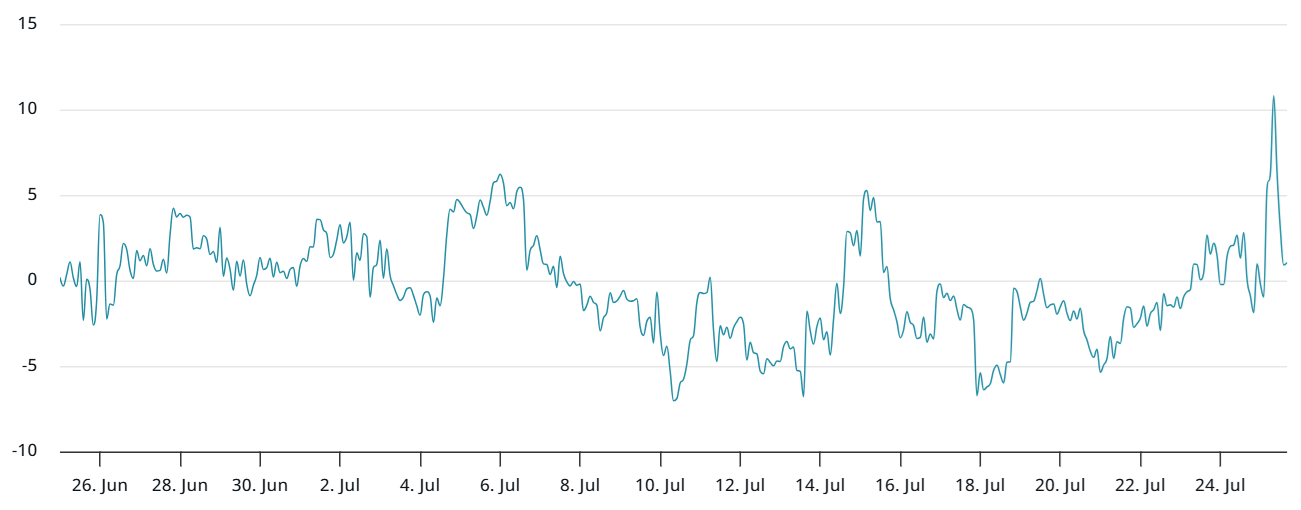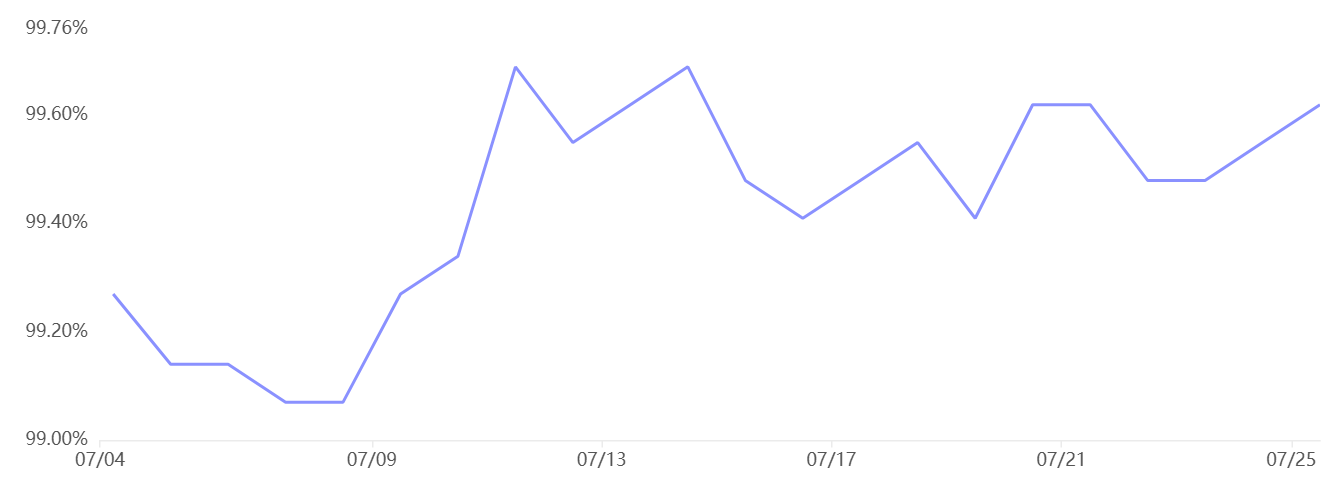Key takeaways:
-
Bitcoin options and futures data suggest traders are neutral despite a 7% drop from the peak.
-
Stablecoin demand in China remains steady, showing marginal fear in crypto markets.
Bitcoin (BTC) dropped 4% between Thursday and Friday, falling below $115,000 for the first time in two weeks. The correction coincided with the monthly derivatives expiry, which wiped out $390 million worth of futures contracts, equivalent to 14% of open interest.
To determine if this event altered traders’ longer-term expectations, it’s important to examine Bitcoin futures and options indicators.
Under normal conditions, monthly Bitcoin futures trade at a 5% to 10% annualized premium over spot markets to compensate for the longer settlement period. The current 7% premium falls within that neutral range and is close to Monday’s 8% level. At first glance, the data suggests no shift in investor sentiment, despite Bitcoin’s $4,700 price drop.
Bitcoin reached a record high of $123,181 on July 14, but the last time futures data signaled bullish momentum was in early February. That timing aligns with the United States imposing import tariffs and the disappointment over the US Federal Reserve maintaining interest rates, despite January’s relatively calm Consumer Price Index (CPI) reading of 3% year-over-year.
To validate whether the neutral stance in Bitcoin futures accurately reflects investor sentiment, one should assess the BTC options skew. When traders anticipate a correction, put (sell) options tend to command a premium over call (buy) options, driving the 25% delta skew above 6%.

On Friday, Bitcoin’s 25% delta skew surged to 10%, a rare stress level last seen nearly four months ago. However, the elevated fear was short-lived, as the skew quickly returned to a balanced 1% level. This signals that whales and market makers are pricing similar risks for both upward and downward price moves.
Bitcoin traders cautiously observe 80K BTC wallet transfers
Bitcoin derivatives suggest that traders are not particularly eager to buy near $116,000, but they also have not panicked after the 7% drop from the all-time high. That is somewhat reassuring given the concerns surrounding the entity that unloaded a portion of its 80,000 BTC balance at Galaxy Digital, according to Nansen CEO Alex Svanevik.

Stablecoin demand in China provides additional insight. Strong retail activity typically drives stablecoins to trade at a 2% or higher premium to the official US dollar rate. Conversely, a discount greater than 0.5% often signals market fear, as traders exit crypto positions.
Related: 35 companies now hold at least 1,000 Bitcoin as corporate adoption booms

Currently, Tether (USDT) is trading at a modest 0.5% discount in China. This indicates that Bitcoin’s recent price dip has not significantly affected cryptocurrency demand in the region. Even with Bitcoin reaching a new all-time high, stablecoin inflows and outflows have remained largely unchanged over the past two weeks.
Overall, Bitcoin traders seem more concerned about the potential escalation of global trade tensions or a US economic recession, both of which could trigger broader risk aversion and weigh on Bitcoin. Still, the current lack of enthusiasm in Bitcoin derivatives does not reflect any critical issues within the crypto markets, which is constructive for the $115,000 resistance level.
This article is for general information purposes and is not intended to be and should not be taken as legal or investment advice. The views, thoughts, and opinions expressed here are the author’s alone and do not necessarily reflect or represent the views and opinions of Cointelegraph.




